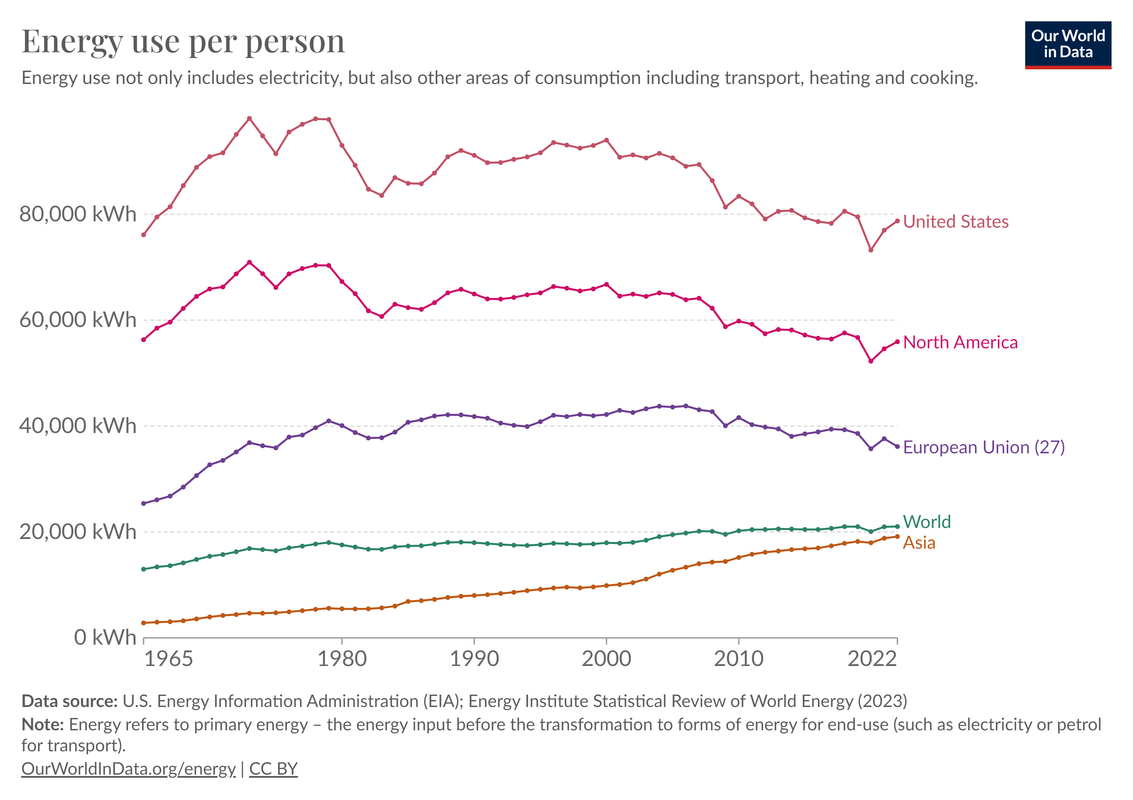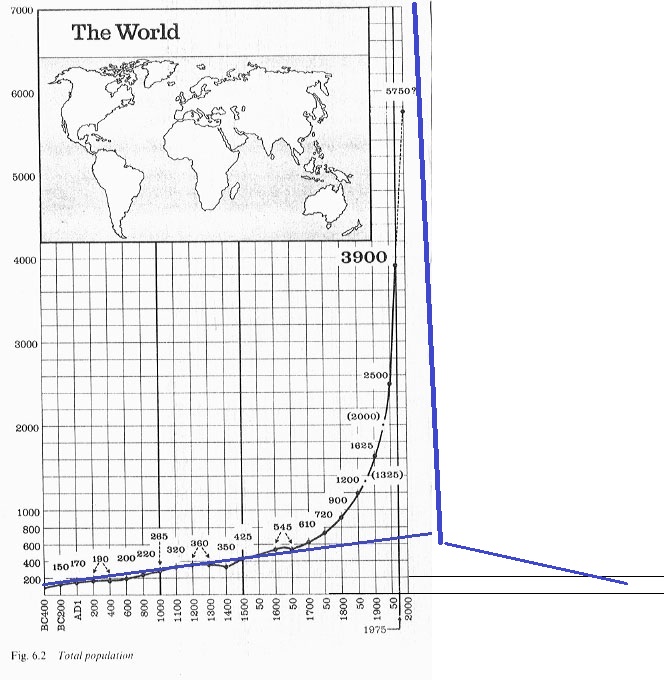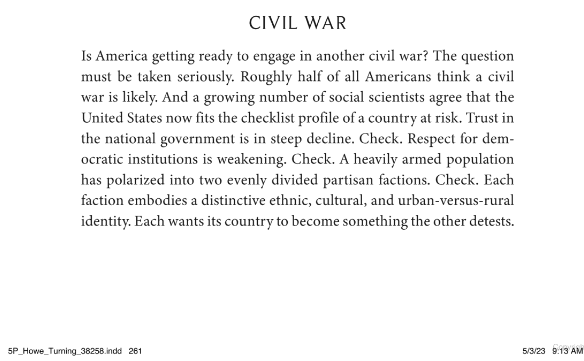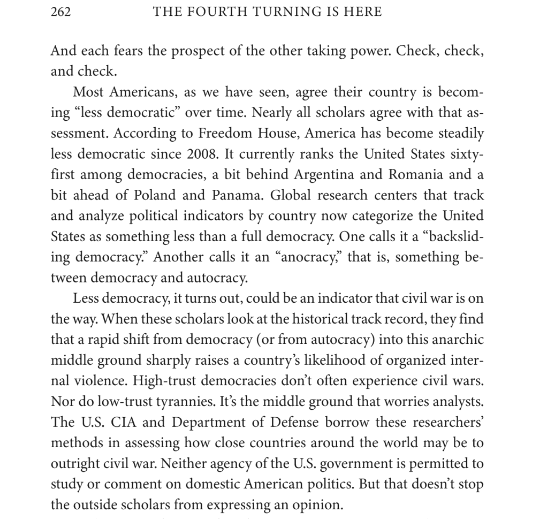Re: Higgenbotham's Dark Age Hovel
Posted: Sat Jan 06, 2024 11:57 pm
Population over-expansion off the sustainable resource base might look something like where the population is relative to the blue trendline. Maybe.


Higgenbotham wrote: Sat Apr 01, 2023 10:08 am Among people who've been seeing collapse for a long time, there has been debate about how bad it will be. I would think (maybe others wouldn't) that they would just say, yes, we agree there is going to be a collapse but we have differences in opinion about how bad it will be. Those differences in opinion, though, have life and death consequences providing the collapse crowd is right and therefore the debate seems to be emotionally charged. My take on that has been that it's pretty difficult to know what is going to happen and everyone should make their own best guesses. If my guesses are wrong, then I may die. That's just how it goes. John Michael Greer and Gail Tverberg are the 2 that come to mind when I say this. They've been trading barbs online. So far the collapse has been slow as John Michael Greer has been predicting. He's been saying since at least 2006 that this collapse will be pretty much like all the previous historical collapses. It seems crazy to me that that will be the case and I've talked about the reasons why here. The biggest reason is that because this is an industrial age economy with a fast growth rate, we are drawing down renewable resources about 20 times faster than Rome was at its peak. Plus by expertly continuing to kick the can down the road, which is about all the ruling class seems to be expert at, resources are being drawn down past the comparable times of previous collapses, probably. Yet John Michael ignores this (my interpretation), and though he has been expecting a new dark age for some time, he moved to Providence, Rhode Island to ride it out. That's the last place I would consider riding this thing out. Gail says this is a networked economy and when the network breaks there will be a huge collapse, much worse than any historical example. I don't want to put words in her mouth, but that's my interpretation of what she is saying. I agree with Gail. In fact, that's what my predictions I've posted repeatedly say in so many words.
Higgenbotham wrote: Mon Jun 16, 2014 3:07 pmHiggenbotham wrote:Bill Gates and others say this is not like Roman times because of all the great technology we have. To that point, let's talk about some of this great technology and how it relates to the drawdown of the resource. I only see technology that works to draw the resource out faster; for example, irrigation in the Midwest that draws down the aquifers, or fracking that draws down the oil resource. Both of these then allow the renewable resource excess extraction rate to be maintained at a higher level than would otherwise be possible. There does not exist any great technology which is putting water back into aquifers or increasing stores of liquid fuels (unless it depletes the other resources - ethanol for example). Most of the enhancement of soil is done with fossil fuel derived products.http://www.gatesnotes.com/Books/Compari ... cient-RomeBill Gates wrote:The key point of the book is that more than 1,500 years separate our current era from Roman times, and life has changed so much that any sense of similarity is illusory. In Roman times, people had barely enough food to sustain them. Human and animal muscle power comprised virtually the entire kinetic energy source. Life expectancy was between 20 and 30 years. Income levels were a fraction of what we have today. So the dynamics of “surviving” were completely different then.
Smil makes an important point regarding scientific and technical advances. Whereas U.S. innovation has played a central role in creating a modern global civilization in less than 150 years, “the Roman Empire had an unremarkable…record in advancing scientific understanding, and its overall contributions to technical and engineering innovations were…fairly limited.”Graphs are here:Higgenbotham wrote: Wed Jun 11, 2014 7:40 pmThe two processes appear similar in that more is extracted out of the ground than can be replaced to maintain a steady state condition.aedens wrote:and the point you noted ---- "Or another way to think about it is what happens when you jump from the 20th floor all at once instead of taking the stairs down from the 5th floor (where you should have been to begin with) to the 3rd floor."
That would have to do with whether hard limits to profits apply or whether it is possible to extend the larger picture by stagflating an industrial economy. History shows that it is possible to stagflate an agricultural economy but there are a lot of reasons for me to expect that when people have to eat they don't close up shop versus when they have an unprofitable business they do close up shop.
It may be that the excess extraction rate initially exceeds the replacement rate required to maintain steady state approximately proportionally to the growth of the population. The growth rate of the population was approximately 0.1% per year in Roman times versus 2% per year in these late Industrial Age times. There would be a point where the population has grown sufficiently to consume the replacement that nature provides to those resounces that are renewable. At the time that point is hit, if the population is growing at a rate of 2% versus 0.1%; with all other conditions being equal, the first year drawdown is occurring at the relative rate of 2% divided by 0.1%. This would mean that the drawdown of the renewable resource where the Industrial Age population is growing 20 times faster than an Agricultural Age population will proceed 20 times faster, approximately, during year 1 of drawdown. This would relate to things that directly affect food production such as soil and water.
Bill Gates and others say this is not like Roman times because of all the great technology we have. To that point, let's talk about some of this great technology and how it relates to the drawdown of the resource. I only see technology that works to draw the resource out faster; for example, irrigation in the Midwest that draws down the aquifers, or fracking that draws down the oil resource. Both of these then allow the renewable resource excess extraction rate to be maintained at a higher level than would otherwise be possible. There does not exist any great technology which is putting water back into aquifers or increasing stores of liquid fuels (unless it depletes the other resources - ethanol for example). Most of the enhancement of soil is done with fossil fuel derived products.
In Roman times they were extracting out of the ground whereas now the extraction is out of the earth in the form of energy, which then enables faster rates of extraction out of the ground. I think it is the rate of extraction and the differential between the rate of extraction prior to collapse that will make the difference in the speed of the collapse, as well as the points noted earlier that are the practical points as to how that may happen in reality. In an agricultural economy, during the collapse, people get less food and there is a process of attrition that lasts a long time - decades or centuries. Even separating the rest of our economy from the agricultural economy and considering just that process, the layering of the industrial economy onto the agricultural economy allows for agriculture to deplete at a much faster rate than was observed historically during previous collapses.
So while I read that "the way to picture how a collapse will take place is to read about how that process has historically occurred" I doubt very much that will be the case. That would be especially true given how the Central Bankers are running the hamster on the wheel at maximum speed.
Collapse Functions.jpg
Excess.jpg
http://gdxforum.com/forum/viewtopic.php?p=24366#p24366

Higgenbotham wrote: Mon Jan 01, 2024 5:02 pmThe Phoenix Principle and the Coming Dark Age by Marc Widdowson, 2001Turning to the duration of the darkness that
will follow collapse, past dark ages can serve as a
guide. Typically, the period of utter obscurity and
turmoil lasts between fifty and two hundred years,
which may therefore be posited as the likely
duration of the coming dark age. A duration nearer
the upper limit of this range is probably more
likely, since the most severe dark ages tend to
follow from the first time that humans achieve a
particular level of social complexity. The present
era is the first time that humanity has achieved so
thoroughly connected a global civilisation, and
some extreme contradictions have been
accumulated. It seems that it will take not one but
several human lifetimes to erase from memory the
hatreds and conceits that ultimately pitch the
present world order into the abyss.
pp. 278-9







